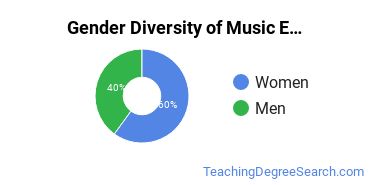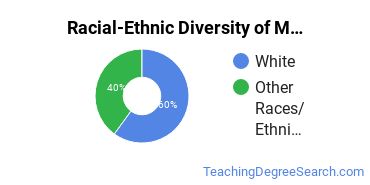Music Education at Hartwick College
Every music education school has its own distinct culture and strengths. We've pulled together some statistics and other details to help you see how the music teacher education program at Hartwick College stacks up to those at other schools.Hartwick is located in Oneonta, New York and approximately 1,209 students attend the school each year.
Want to know more about the career opportunities in this field? Check out the Careers in Music Education section at the bottom of this page.
Hartwick Music Education Degrees Available
- Bachelor’s Degree in Music Teacher Education
Hartwick Music Education Rankings
The music teacher education major at Hartwick is not ranked on College Factual’s Best Colleges and Universities for Music Education. This could be for a number of reasons, such as not having enough data on the major or school to make an accurate assessment of its quality.
Music Teacher Education Student Demographics at Hartwick
Take a look at the following statistics related to the make-up of the music teacher education majors at Hartwick College.
Hartwick Music Education Bachelor’s Program

The following table and chart show the race/ethnicity for students who recently graduated from Hartwick College with a bachelor's in music teacher education.

| Race/Ethnicity | Number of Students |
|---|---|
| Asian | 0 |
| Black or African American | 0 |
| Hispanic or Latino | 0 |
| White | 1 |
| International Students | 0 |
| Other Races/Ethnicities | 0 |
Related Majors
Careers That Music Teacher Education Grads May Go Into
A degree in music teacher education can lead to the following careers. Since job numbers and average salaries can vary by geographic location, we have only included the numbers for NY, the home state for Hartwick College.
| Occupation | Jobs in NY | Average Salary in NY |
|---|---|---|
| High School Teachers | 74,830 | $85,300 |
| Middle School Teachers | 39,950 | $83,490 |
| Art, Drama, and Music Professors | 11,530 | $99,870 |
| Education Professors | 5,590 | $88,580 |
References
*The racial-ethnic minorities count is calculated by taking the total number of students and subtracting white students, international students, and students whose race/ethnicity was unknown. This number is then divided by the total number of students at the school to obtain the racial-ethnic minorities percentage.
- College Factual
- National Center for Education Statistics
- O*NET Online
- Image Credit: By ErixS under License
More about our data sources and methodologies.
